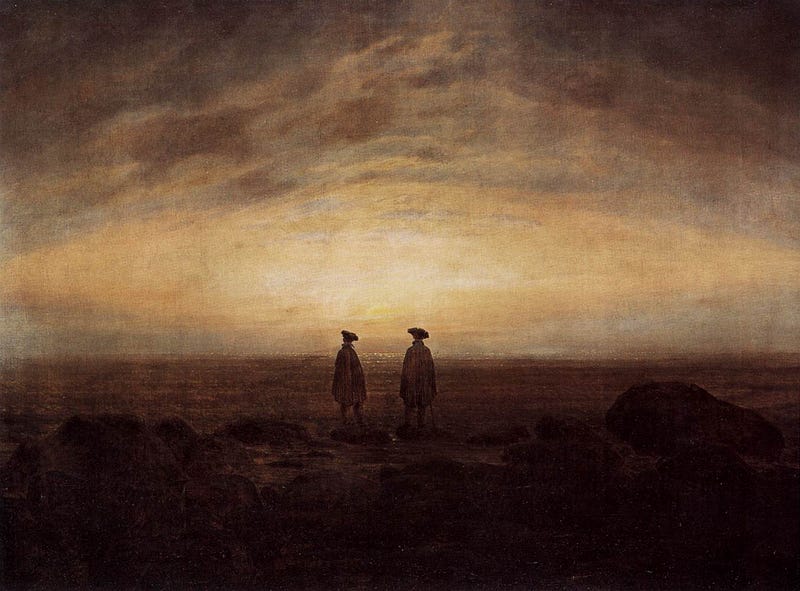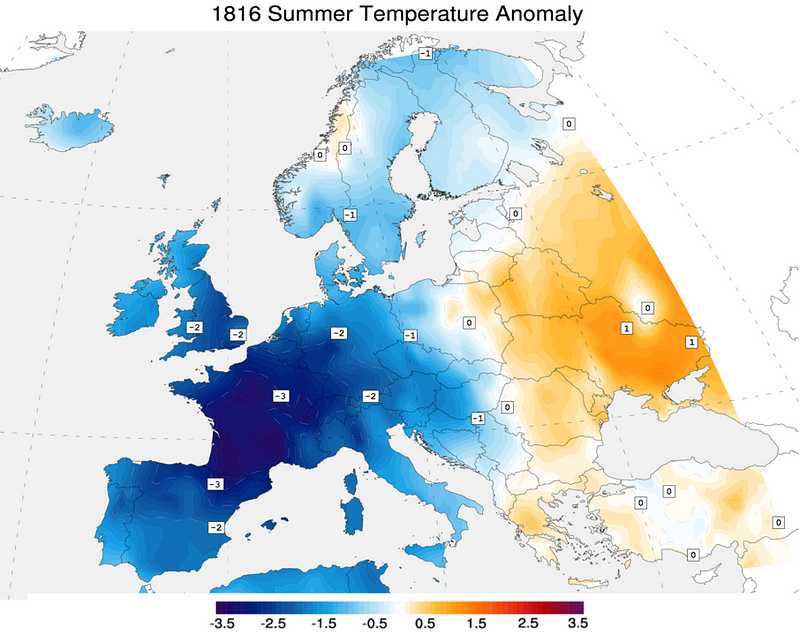The 1816 Catastrophe: A Summer That Never Was
Written on
Chapter 1: The Year Without a Summer
In 1816, a phenomenon known as the Year Without a Summer occurred, drastically altering the climate. This unusual year was triggered by a colossal volcanic eruption in present-day Indonesia, which released vast quantities of ash and dust into the atmosphere. The result was a significant decrease in temperatures and a persistent cloud cover that hindered sunlight. As a consequence, agricultural yields plummeted, affecting regions from China to France.
People wandered through the dreary July weather, puzzled and shivering, unaware that a massive eruption in Southeast Asia was the cause of this unseasonable chill.
Section 1.1: The Coldest Summer Recorded
The Year Without a Summer marked the coldest summer ever documented in Europe since 1700. Average temperatures in central and western Europe were about three degrees lower than usual. The harsh conditions, characterized by cold, gloomy days, made it feel more like winter than summer. Continuous heavy rainfall led to widespread crop failures.
Unrelenting rains inundated the continent, devastating farms and causing significant flooding along rivers. August temperatures were so low that frost appeared on the ground, exacerbating agricultural losses. The persistent bad weather resulted in a catastrophic famine across Europe.
Subsection 1.1.1: The Global Impact

The Year Without a Summer was noted as the worst famine in Europe throughout the 19th century. Record-breaking cold temperatures were recorded in July, making it the coldest summer since 1600. The effects were devastating, not just in Europe but also in North America, where residents experienced an unyielding fog that failed to lift, regardless of rain or sunshine.
In the United States, a newspaper from Virginia remarked on the persistent chill in mid-July, noting that summer had not truly arrived, with oppressive easterly winds dominating the weather.
Section 1.2: Food Shortages and Social Unrest
The backdrop of the Year Without a Summer was the lingering devastation from the Napoleonic Wars, which had already crippled the peasant population and depleted food supplies. The regions most affected were those that had recently endured years of conflict. This led to widespread famine across Europe.
Great Britain faced severe food shortages, resulting in thousands of deaths and migrations from Ireland, Wales, and England. In France, protests erupted as citizens marched with slogans like “Bread or Blood,” reflecting the growing frustration over rising food prices and the perception that the elite were profiting at the expense of the common people.
Meanwhile, in China, unusual monsoon rains caused catastrophic flooding that devastated rice crops along major rivers. Taiwan, a subtropical island, experienced snow, and frost, sleet, and snow fell during the spring and early summer, leaving many in Asia starving.
Chapter 2: The Aftermath and Global Response
The first video titled "The Year Without a Summer" delves into the historical implications of this climatic anomaly, examining its causes and effects on societies around the world.
The second video, "1816 The Year Without a Summer - Global Catastrophe," provides a comprehensive overview of the global consequences of this year, detailing how it reshaped agricultural practices and societal structures.
Despite the passage of time, it took several years for global food supplies to stabilize post-1816, with hunger-related turmoil lingering long after. The volcanic ash in the atmosphere led to a significant drop in temperatures, creating an unusually wet and gloomy summer. This resulted in crop failures and frigid mornings that made July feel more akin to December. People looked to the skies, bewildered by the harsh climate of the Year Without a Summer.


